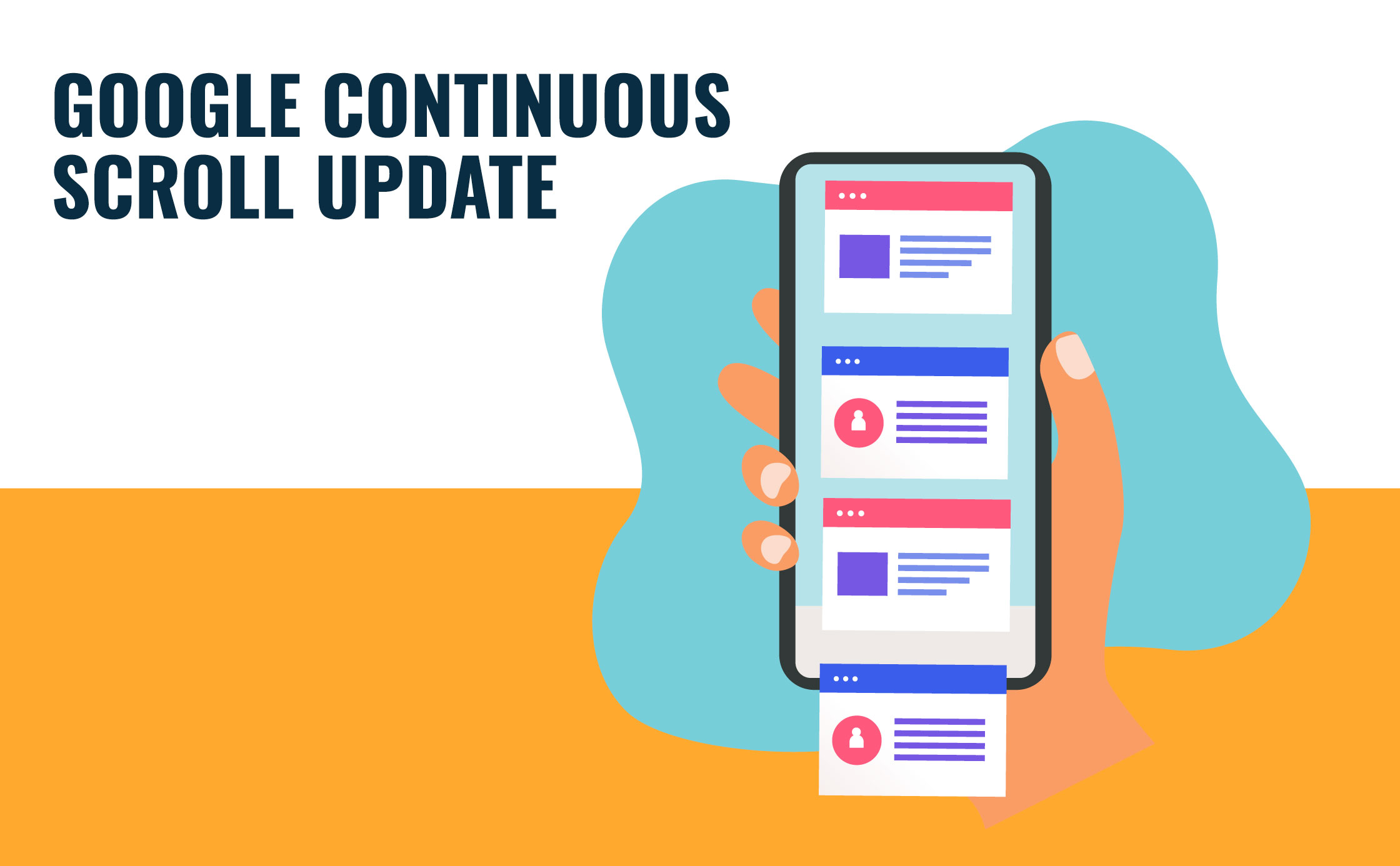 Have you noticed that Google no longer uses pages to organize their search results?
Have you noticed that Google no longer uses pages to organize their search results?
In October 2021, Google successfully rolled out their continuous scrolling feature for mobile users. Now, Google has finally introduced this feature for desktop users.
What is Continuous Scroll?
Gone are the days of having to click “next page” to see more results. Continuous scrolling is a feature that allows users to see up to six pages worth of search results before needing to click “see more results”.
This convenient feature makes it easier for users to see more results before making a decision on what to click. It also gives your site more visibility than ever, especially if the site has previously ranked below the first page. The potential benefit here is better click through rates for lower ranking pages.
Page 1 No Longer Exists
SEO’s goal has always been to get a website ranking on page one. Now that page one doesn’t necessarily exist anymore, we should adjust our goals and strategy accordingly.
The top 3 spots in Google search still have the highest click through rate, but users may now spend more time checking out other options rather than rely on those top results.
Source: https://backlinko.com/google-ctr-stats
In order to stand out in search results, title tags and meta descriptions should be as engaging and relevant as possible.
An effective title tag should include your target key word and click-worthy words such as: fast, easy, top, essential, etc. Calls to action like “call us today” or “contact our team” are essential in all of your meta descriptions.
Having well-optimized title tags and meta descriptions can improve your website’s click through rate and increase your website traffic.
More Opportunity to Appear in Featured Snippets
Without page breaks to separate search results, Google uses Ads, featured snippets and other search features to keep the results engaging to users.
Featured snippets are special boxes where the format of a regular search result is reversed, showing a descriptive snippet first. Without distinct pages to break up a long list of results, these snippets give users a more visually appealing answer to their query.
This “people also ask” snippet offers users additional information related to their initial search query.
The following snippet pulled the answer to “how to fix a clogged sink” from a web page and made it super easy for users to read.
So how do you get a featured snippet for your website? It’s completely up to Google.
Adding schema to your website doesn’t automatically guarantee it a spot in a featured snippet, but there are some things we can do to put your site in the best position to get one.
For example, adding FAQ schema is a great way to make an answer more likely to show up when a user types out a question in the search bar. Adding local business schema may increase its likelihood of appearing in Google’s knowledge panel or in a carousel of other similar businesses in your area.
Data Found So Far Since the Continuous Scroll Update
Impressions did increase for positions 15-20, previously found on page 2, from 20% to 25% since the Google continuous scroll update. This change reflects the fact that users may have scrolled down the page without realizing they have gone past the top 10 results.
But, ranking in the top 3 results is still important after this update, as only 4% of total clicks occur after position 6.
Our Local SEO Experts are Here to Help
Trust our team of experienced SEO experts to help you navigate the impact of continuous scroll on your website. We can optimize your site to help it rank well and stand out among the competition. We can also create an actionable SEO strategy to keep up with the goals of your business.

About the Author | Maggie Barclay
Maggie Barclay is a Senior SEO Analyst at Townsquare Interactive. She graduated from Liberty University in 2019 with a degree in Strategic Communication. Maggie has been with Townsquare for over three years and is passionate about using SEO to help local businesses succeed. In her free time, she enjoys reading and traveling.



